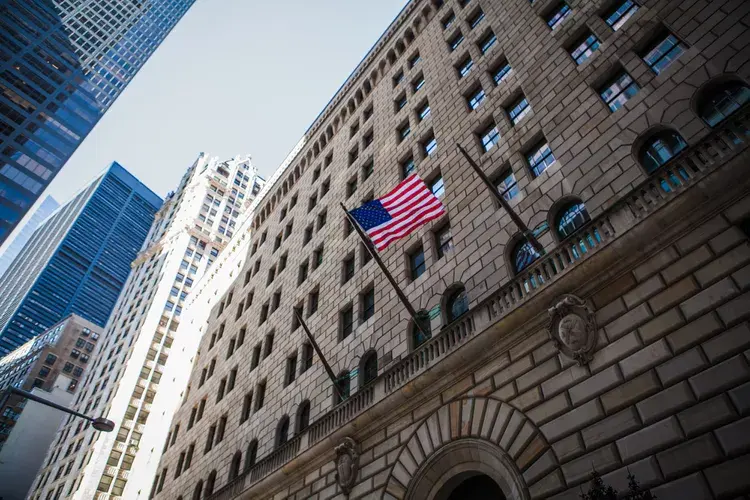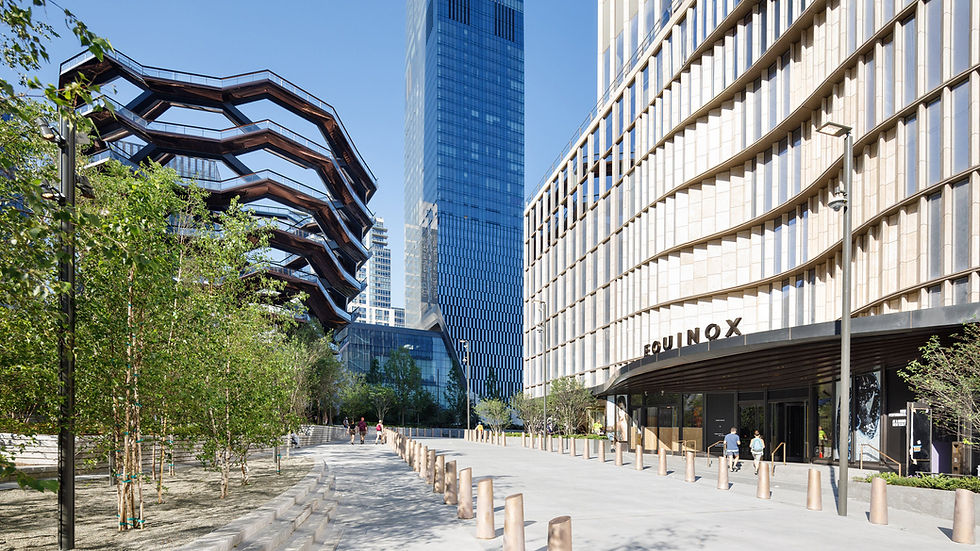Weekly Market Report - May 30, 2023
- Norman Bobrow

- May 29, 2023
- 5 min read
Updated: Jun 6, 2023
***
Owners of some of New York’s lesser quality office buildings are selling at a discounted rate, the Wall Street Journal reported. Developers in the city are assessing the amount of pain they’re willing to inflict upon themselves as prospective building values fluctuate regularly in the weak post-Covid office leasing environment. Last week, Scott Rechler’s RXR defaulted on its office tower at 61 Broadway in the Financial District. RXR is turning over ownership to whoever buys the $240 million defaulted loan, which may sell for roughly half of the building’s $440 million valuation from 2016.
In March, Empire Capital Holdings agreed to buy 529 Fifth Avenue in Midtown from Silverstein Properties for $105 million. Silverstein refinanced the property fewer than three years ago for $171 million and also recently spent $20 million on renovations. The same month, Brookfield Properties moved to buy back a piece of One Liberty Plaza from the Blackstone Group, its partner at the 2.3-million-square-foot property. While the sale six years ago came at a valuation of $1.5 billion, the most recent sale came with just a $1 billion valuation. While the discounts may be disappointing to the sellers, it also provides an opportunity to get the office market moving again after it was stalled by a poor return-to-office movement and high interest rates.
The properties going at discounted rates are of lesser quality than the top-tier buildings, beneficiaries of the clichéd “flight to quality.” Those buildings remain in demand for tenants motivated to bring employees to the best space they can afford. Landlords are more willing to move the lesser properties to try and focus on making the better properties profitable. The next shoe to drop on Manhattan’s office market may be the $60 billion offloading of commercial assets owned by the failed Signature Bank, which is being marketed by Newmark. The firm’s co-head of capital markets, Doug Harmon, said the sale (or sales) could be a “catalyst” for the market.
***
RXR defaulted on the $240 million loan on its 33-story office tower in lower Manhattan. The developer, which owns and manages dozens of commercial and residential properties in the New York City area, has said that it will turn over ownership of the office tower at 61 Broadway to whoever buys the defaulted debt. Until now, market upheaval has frozen sales activity, making it very difficult for owners, lenders, appraisers and others to determine how far office building values have fallen.
In the first quarter of 2023, investors purchased only $489.5 million in Manhattan office properties, the lowest volume since the fourth quarter of 2009, around the height of the global financial crisis. By comparison, volume was $5 billion in the first quarter of 2022. Sales for the mortgage on 61 Broadway and Silverstein’s Fifth Avenue office building could help jump-start the market, because other buyers and sellers will use those transactions to help determine values. Deeply discounted sales reflect the emergence of a two-tiered office market. One tier includes the highest quality space with amenities such as rooftop decks, extensive food offerings and stellar views. These properties can still attract top rents from tenants who are looking for ways to reward employees for returning to the office. But there is still a glut of run-of-the-mill space that requires a big capital investment by landlords for upgrades necessary to attract tenants. Landlords who own both types of buildings are getting rid of the weaker properties to focus on the ones that can still be profitable.
RXR went through a culling process of its entire office portfolio, which Chief Executive Scott Rechler dubbed Project Kodak. The firm’s top quality properties, like 75 Rockefeller Plaza at Rockefeller Center, were designated as “digital” keepers. Older properties in less popular locations, such as 61 Broadway, were labeled as “film” and targeted for possible removal. The office-building sales pipeline in New York is beginning to grow, market participants said. One of the next big deals will likely be the Federal Deposit Insurance Corp.’s sale of the $60 billion portfolio of commercial property assets that had been owned by the failed Signature Bank. A lot of buyers have been steering clear of New York office buildings, especially traditional office buyers like insurance companies and pension funds. But investors are beginning to notice the low price tags.
***
US office real estate investments trusts are trading at their lowest level since 2009 as the trend towards remote work leaves desks empty and economic pressures tighten corporate budgets. The S&P Composite 1500 Office Reits index is down 27 per cent in 2023, plunging to its worst reading since Jul 22, 2009. Office landlords comprise just 6 per cent of the Reit sector, which explains why the broader S&P Composite Equity Reits index is down just 5.2 per cent year-to-date and the S&P 500 Real Estate sector has dropped 4.5 per cent. Offices are what’s weighing on the group. “There’s two ways to lose money: You can own a boat, or you can own an office building,” Piper Sandler analyst Alexander Goldfarb said. “At least with the boat you can take your friends out on a sunset cruise.” While the stress on the office sector may not be new, the shift to working from home has exacerbated the problem.
***
In 2007, Blackstone bought Sam Zell’s Equity Office Properties for $39 billion — about $3 billion more than it wanted to spend, thanks to a competing bid from Vornado. That forced Blackstone to re-sell more of the office properties than it had originally planned. In the post-pandemic world, any pre-Covid office sell-off looks like a stroke of brilliance. Blackstone’s divestment began after the Equity purchase, when most of its real estate was office. Though the market for Class A office space recovered after the Great Recession, Blackstone had its eyes on other asset classes.
Office markets around the country have been moribund as employees resist returning to their desks on a full-time basis and their employers look to save money on rent. In 10 metro areas, average occupancy in offices tracked by data firm Kastle Systems hovers just under 50 percent. New York City’s was 49 percent in mid-May, while Houston led the way with a modest 61 percent and San Jose brought up the rear at 39 percent. Concessions remained common across the 28 deals for at least $100 per square foot and 25,000 square feet signed last quarter in Manhattan’s office market. While that number was higher than the five-year quarterly average, concessions outpaced price increases, as landlords offered on average 16 months of free rent, down from 13 months pre-Covid. And despite talk of a “flight to quality,” tenants are more likely than ever to land a lease below $100 per square foot in Class A properties.
Manhattan’s office availability in the quarter ticked up to 17.1 percent. Those are problems for other firms now, not Blackstone. Distributable earnings from its real estate were down 58 percent last quarter because of the frozen investment-sales market, and it has limited investors’ withdrawals from its non-traded real estate fund BREIT, but by shedding office assets it has avoided the bloodbath that engulfs rivals — such as Vornado.









Comments